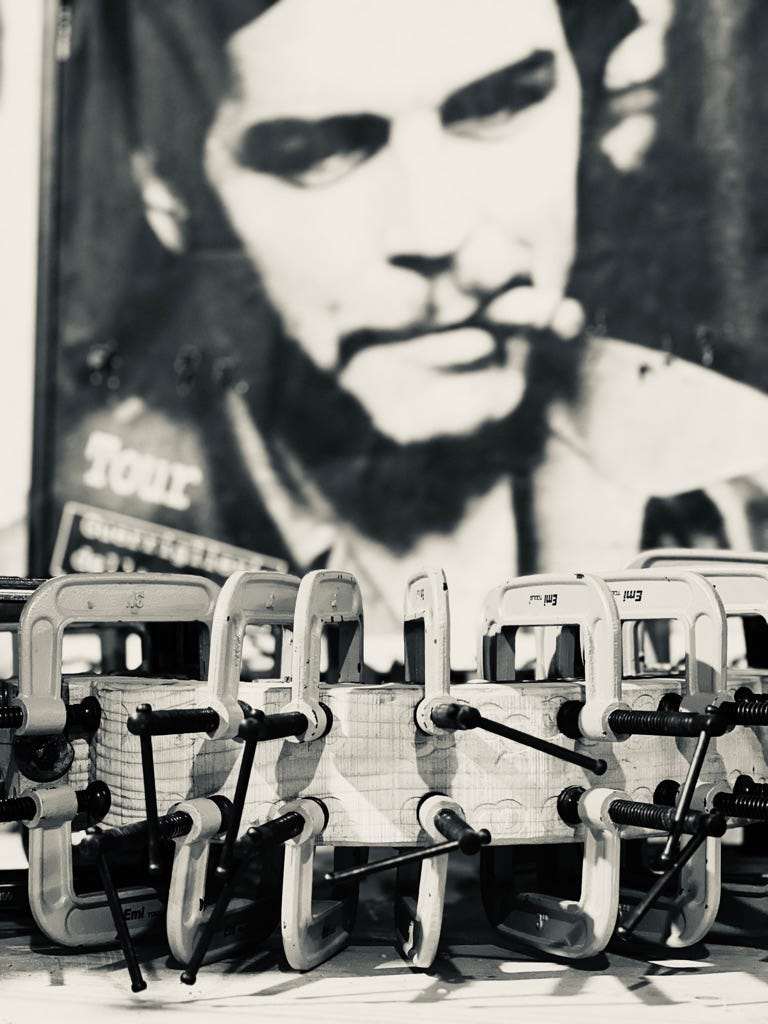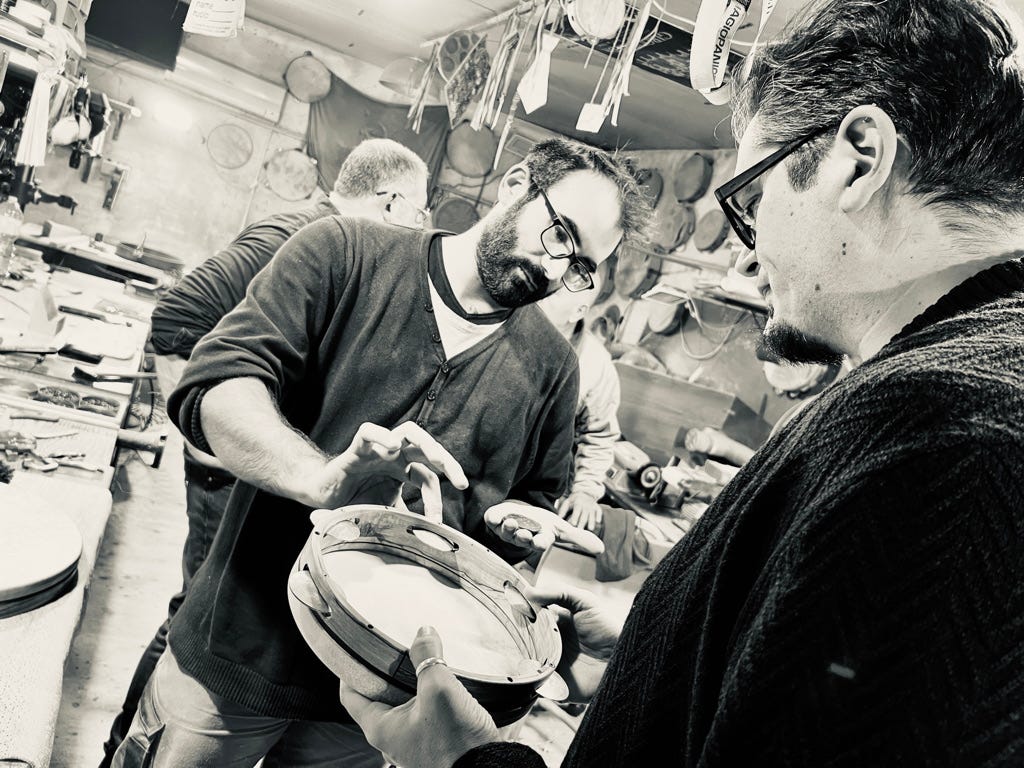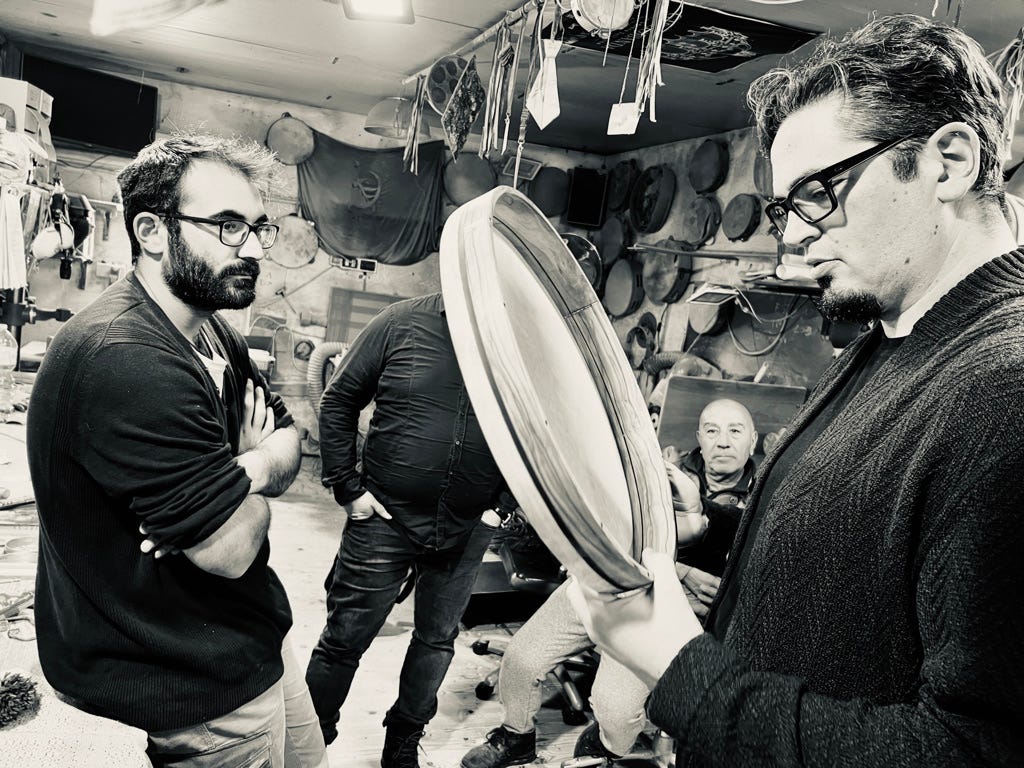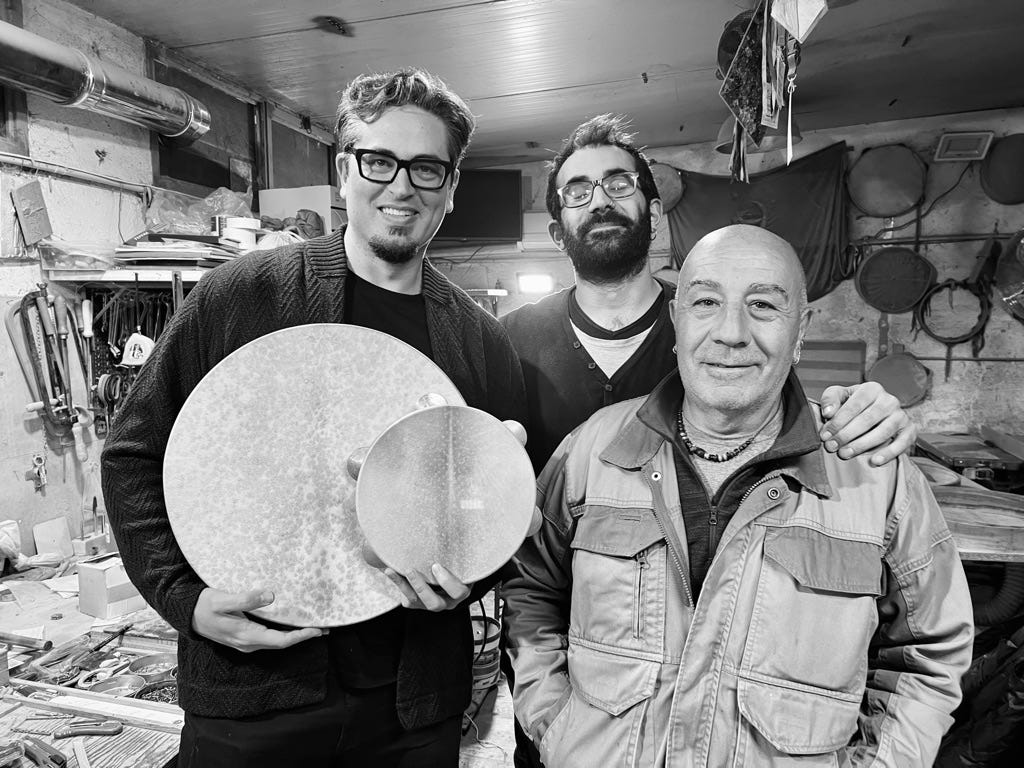During my time in Puglia last December, I paid visit to the workshop of iconic tamburello builder Biagio Panico.
Tamburello is the southern Italian tambourine, an instrument that has been present in this area since Greco-Roman times, and that is considered the soul of southern Italian traditional music. This rings even truer in the southern tip of Puglia, a region called Salento, where the tamburello is always at the core of the ensemble that plays Pizzica, a particular kind of music that has had for centuries the dual function of social dance and healing ritual (more on Pizzica healing spider bites another time).
While in Puglia, Rhiannon Giddens and I, were guests of Mauro Durante, a wonderful musician that keeps the tradition of music from Salento alive, while propelling it into the future with his ensemble Canzoniere Grecanico Salentino. Mauro inherited this group from his father Daniele Durante, one of the pioneers of the Pizzica revival that started in the 1970’s and that has made this music very popular all over Italy to this day.
I had heard many amazing things about Biagio Panico and his drums in the past, but it was only until a recent conversation with my friend, the great tamburello virtuoso Andrea Piccioni, that I started thinking about ordering some new instruments from Biagio’s workshop.
Andrea has developed a contemporary style on the tamburello, based on all the traditional regional Italian styles, but also augmented with techniques and concepts coming from other frame drums and percussion traditions from all over the world. In our conversation Andrea mentioned that he had started a collaboration with Biagio and Lorenzo Panico to design together a series of instruments.
So after a phone conversation with Lorenzo Panico (the younger heir to this tradition of drum making), I decided to order two new drums to add to my arsenal. Coincidentally the drums were ready at the same time of our visit to Salento, so we arranged for a meeting to collect the drums in person, and Mauro was more than happy to bring us to visit Biagio’s workshop in Torrepaduli.
I always get excited about visiting an instrument maker’s workshop. For someone who owns many instruments like me, these places are like toy factories! The smell of the wood and the glues, the sawdust everywhere, the apparent chaos of instrument parts scattered around…there is always an aura of magic in these workshops. From inanimate pieces of wood, metal and skin, musical instruments with a distinct personality are born through the hands of skilled craftsmen, they are all different and they “speak” in their own unique way. Visiting a workshop also means having a peak at the soul of the instrument maker, and it always helps me understand what kind of energy went into the making of the instrument.
The reason why I love working with and supporting artisans like Biagio Panico, is that they have inherited a long tradition of drum making and they are incredibly knowledgeable about their craft and art. Not only they are very happy to talk you through the details of the whole process, but they are usually quite open to questions and problem solving when it comes to very specific ideas I might have. They are part of the traditional music scene as much as any musician is, and their craft and skill is very deeply rooted in tradition but also in constant motion and evolution.
You can see Lorenzo Panico here talking me through the details of my first drum, a small modern tamburello, (like the one in the video here above) and explaining to me all the different types of (interchangeable) jingles that come with the instrument.
Lorenzo explained to me the very unique process of their drum making, which utilises olive wood. Olive tree wood is dense and hard, and it’s not a very common wood used for drum making. Further to that it is hard to find long pieces of the wood as the trees are usually quite short and stubby. Nevertheless Biagio and Lorenzo believe olive wood has a unique resonating quality when used for drum making.
The olive tree is one of the most iconic symbols of Salento. Puglia has been know for centuries for its olive oil, for fuelling lamps in the past, and more prominently for its use in cuisine in recent times. Unfortunately the spread of a bacteria called Xylella fastidiosa in 2018 has killed a huge part of of the tree population and has altered the landscape of the region in a very dramatic way.
Lorenzo explained that this natural disaster (unfortunately made worse by human decisions), has created a huge availability of olive wood in the area and it has facilitated the development and creation of these special olive wood drums.
He described it as a small positive development within an enormous tragedy.
My second drum is an 18’ tar without jingles. This drum is amazing, very light and easy to play. The way the skin has been treated allows it to be tuned to very low pitches, something usually found in much larger instruments.
Here is a picture of me with my new drums and with master drum makers Lorenzo and Biagio Panico
If you are interested in how a frame drum gets made, watch this short video documentary.
You can have a look at all their drums at their website here:









As always, your postings are enthralling. I love your passion for instruments, music, craftsmanship, Italy, the Mediterranean and North African regions, cooking, and your overall “nerdiness,” which I absolutely share. I don’t play hand drums (yet), however, your piece has inspired me to order one of these wonderful craftspeople’s tamborellos!
Have you seen/read this Smithsonian Folklife piece in the feminine legacy of the Italian frame drum? Having experienced a bit of your scholarship, my guess is you have. I personally have a lot of “research”/more reading to do after reading it and watching the videos:
https://folklife.si.edu/Contents/Item/Display/14006
What a wonderful tour of your world of tamburellos and frame drums. LOVE the pizzica music, and remember how much I have loved Rhiannon's version of one on "Calling Me Home". The making of the instruments is fascinating to watch, and I noticed they moved quickly over lots of the details of putting them together. I suppose they are guarding their secrets of success . . . as they should. Look forward to you playing your new instruments at a concert soon . . . hope to see y'all again soon.